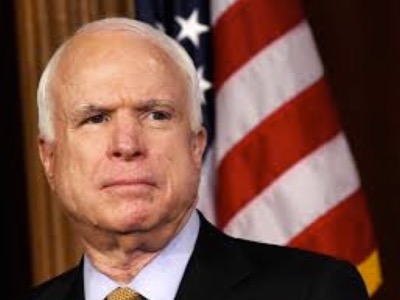
The Honorable Ashton Carter
Secretary of Defense
1000 Defense Pentagon
Washington, DC 20301
Dear Secretary Carter:
As a young military officer, I bore witness to the failed policy of gradual escalation that ultimately led to our nation’s defeat in the Vietnam War. Now as Chairman of the Senate Armed Services Committee, I fear this administration’s grudging incrementalism in the war against the Islamic State (ISIL) risks another slow, grinding failure for our nation. My conversations with military commanders both on the ground and in the Pentagon have led me to the disturbing, yet unavoidable conclusion that they have been reduced from considering what it will take to win to what they will be allowed to do by this administration. And it will be the men and women serving in our military and our national security that will pay the price. This is unacceptable.
The most important responsibility of the Senate Armed Services Committee is to determine the capabilities that our military requires to defend our nation and provide the necessary resources and support our warfighters need to achieve their missions and return home safely. In order to inform the Senate Armed Services Committee’s ongoing review of the Department of Defense’s fiscal year 2017 budget request, the Committee must have full insight into the scale and scope of U.S. military operations against ISIL. Therefore, I ask you to provide the Committee with written responses to the following questions:
1) As of March 31, 2016, how many U.S. military and civilian personnel were present in Iraq in support of Operation Inherent Resolve, including personnel that are not accounted for under the force management level numbers?
2) As of March 31, 2016, how many U.S. military and civilian personnel were present in Iraq in support of missions other than Operation Inherent Resolve, including personnel that are not accounted for under the force management level numbers?
3) As of March 31, 2016, how many U.S. contractors were present in Iraq providing contract security support to the U.S. Government?
4) Does the U.S. Government have any plans to negotiate a Status of Forces Agreement with the Government of Iraq (GOI) or to ask the Iraqi parliament to approve the presence of U.S. military personnel in Iraq?
5) As of March 31, 2016, how many U.S. military and civilian personnel were present in Syria in support of Operation Inherent Resolve?
6) With the current U.S. force level provided in response to Questions 1 and 5, how long do you estimate it will take for coalition forces to recapture Mosul and Raqqa?
7) Given your current estimates of available coalition forces going forward, how many U.S. military and civilian personnel would be required in addition to the current force level provided in response to Questions 1 and 5 in order for coalition forces to recapture Mosul and Raqqa by the end of 2016?
8) As of March 31, 2016, how many U.S. military and civilian personnel were present in Libya? Given that ISIL reportedly controls an army of up to 8,000 fighters in Libya, do you assess that the deployment of U.S. military personnel to Libya above the present level will be required in order to achieve ISIL’s lasting defeat? If so, please provide your estimate of what U.S. forces may be required.
9) As ISIL metastasizes and gains allegiances throughout Africa, what U.S. military presence is required to stop and roll back its advances on the continent?
Please provide your responses to these questions in coordination with the Department of State in an unclassified form, with a classified addendum if necessary, within the next two weeks.
Thank you for your service to our nation, and I look forward to your response.
Sincerely,

 Articles by this author
Articles by this author










Stay In Touch
Follow us on social networks
Subscribe to weekly newsletter